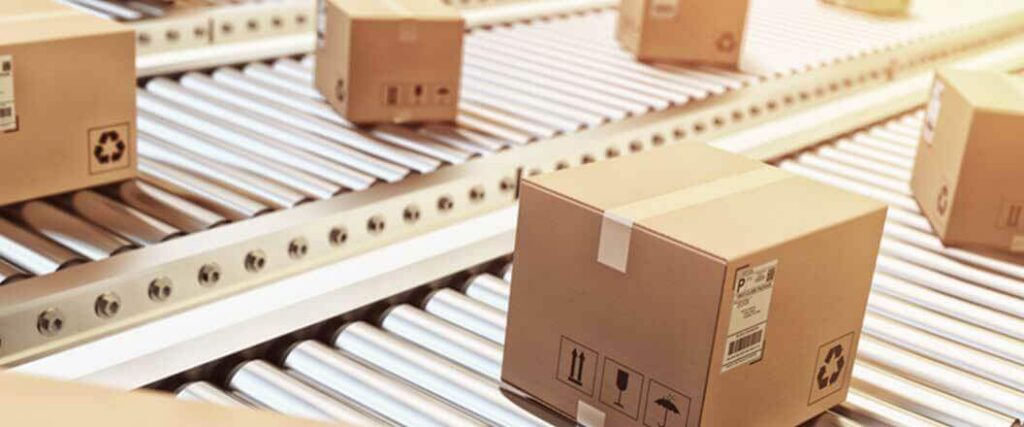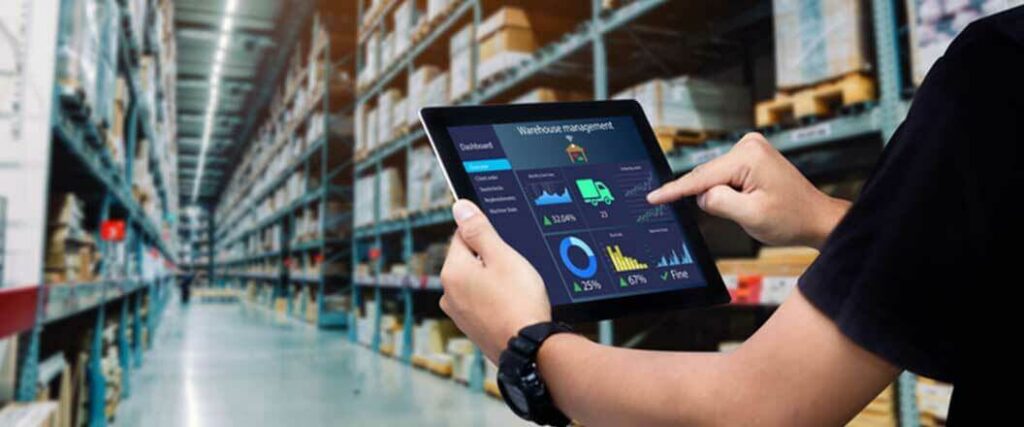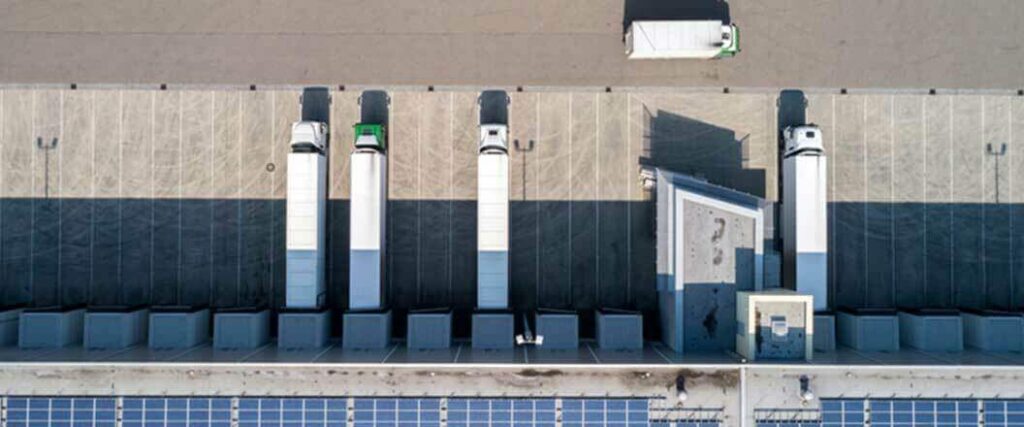
 Copy URL to Clipboard
Copy URL to Clipboard
Table of Contents
Lorem Ipsum... this is the text for the quick answer...
Retail logistics is a component of any business that sells merchandise. Ensuring products arrive on time and efficiently is essential. However, managing logistics can be challenging due to factors like fluctuating demand and maintaining inventory accuracy.
Retail logistics, per the Council of Supply Chain Management Professionals, is the flow of goods from suppliers to consumers. Businesses use tools like advanced demand forecasting and real-time inventory management tools to mitigate challenges. The types of retail logistics include inbound, outbound, reverse, and third-party.
We’ll explain the inner working of retail logistics to help you apply to your business operations.

Retail logistics is the backbone of any business and plays a critical role ensuring that products reach customers efficiently and effectively.
It encompasses several key areas, such as:
Understanding how these components work and compliment one another is essential for businesses that want to improve their retail logistics operations.
Inventory management is the process of keeping track of all products a retailer has in their possession.
It consists of these components:
Tracking and monitoring stock helps businesses keep an eye on their inventory. This lets them determine their current product levels and what goods need to be reordered. Many retailers use software to keep tabs on their items.
When product levels run low, a company will have to order more products to replenish their inventory. This includes setting reorder points and quantities based on forecasted demand and average lead times. In some cases, retailers will use automated replenishments systems when inventory levels are too low.
Transportation is a critical component of retail logistics management. It’s used to transfer goods from the supplier and warehouse to the consumer.
Transportation needs in retail include:
There are many methods of transportation that have to be considered. Retailers have to decide between air, road, or rail shipping to move their goods.
Pros and cons of each include:
If rail and/or air is used, chances are the cargo will eventually be transferred to a truck at some point in the journey. This makes efficient route planning essential during the transportation process. Many businesses use specialized software to plan out the path their freight will take.
Factors that are considered during route planning include:
With these factors in mind, retailers can find the most efficient route. This will help them reduce shipping costs and assist with adjustments that might be required during the journey. Working with reliable carriers is essential. Companies should build relationships with multiple transportation providers to ensure coverage and competitive pricing.
Regulatory compliance is another important part of transportation logistics in retail business. Companies will need to secure the correct paperwork for their cargo. Finally, businesses have to manage their costs the best they can. Doing so is a balancing act between expenses and quality service.
Retailers can manage their costs by doing the following
Taking these steps can help a business better budget their transportation logistics in retail management.
Warehousing is the part of retail logistics operations that deals with receiving goods, storing them, and shipping them off to stores or customers. When goods arrive at a facility, they’re checked for damage and accuracy. Afterward, items are sorted and separated to the corresponding areas of the retail shipping warehouse.
Many facilities have specific locations based on the demand and size of products that are stored. Warehouses utilize a layout that facilitates easy movement of products and staff. Having an efficient setup also makes warehousing much safer for the workers running it.
When an order comes in, facility personnel will retrieve the items. This process is called picking. Once the items have been picked, they’re packed into a box and labeled. For bulk orders going to the same destination, the packages will be palletized. After that, the items are transported from the warehouse to the next location.
The work doesn’t end for retailers when their shipment goes on the road. During the distribution process, businesses have a few responsibilities they’ll need to handle.
These include:
Providing customers with real-time retail logistics tracking of their orders adds transparency and builds trust. Businesses can choose to send tracking links via text or email.
From there, customers can get updates from the carrier transporting their loads. Capturing proof of delivery is an important step in the delivery process. Fortunately, many carriers provide this service for shippers.
Delivery personnel often use digital methods, like smartphone apps, to capture signatures or photos as proof of delivery for small and bulk shipments. This documentation is crucial for resolving any disputes about delivery and enhancing the security of the process.
Navigating the complexities of retail logistics involves overcoming a variety of challenges. Being familiar with these issues will help businesses owners navigate these problems.
Fluctuating demand is one of the significant challenges in retail logistics. Companies must always ensure they have enough stock for consumers to buy, but not so much that they can’t sell it within a reasonable time frame.
Fluctuating demand can make this difficult for a variety of reasons:
Excess stock can occur if a company orders too much of an item that isn’t in high demand amongst buyers. On the other hand, business owners will face stockouts if they don’t realize how much their customers want a certain product.
With fluctuating demand, it’s also hard to figure out the right amount of products to manufacture and store for the retail supply chain. Therefore, coordinating with suppliers to adjust production schedules can become complex.
Changes in demand can negatively impact shipping operations in retail store logistics. A surge for products will require additional transportation resources and space within a warehouse.
Demand is influenced by various factors, such as:
Retailers must continuously analyze data and adjust their strategies to keep up with changing demand patterns.
Maintaining inventory accuracy is another challenge that occurs in retail supply chain logistics. Inaccuracies can lead to a decline in customer satisfaction and financial performance.
While fluctuating demand can cause overstock and stockouts, inaccurate data on product levels can lead to the same problems. This can cause retailers to order too much or too little of the goods they need.
If you’re tracking inventory levels manually, it can create accuracy issues and more prone to errors. It’s also more difficult to ensure records are up-to-date.
Working with a company like Fulfillment and Distribution, which is invested in using updated tracking technology, is in a retailer’s best interest. It’s then possible to keeping track of multiple inventory levels on multiple channels accurately.
Channels could include:
Finally, data synchronization issues can cause inventory inaccuracies. If there’s an inconsistency, product levels can be wrong. Real-time data synchronization is essential to ensure accuracy across all channels and locations.
Striking the right balance between cost-effectiveness and efficiency in retail logistics is a challenging, but an essential aspect of supply chain management.
Challenges retailers face in this balancing act include:
Operational costs like labor, warehousing, and transportation are always on the minds of business owners. As a result, retailers may try to use methods of reducing the amount of money they spend on these parts of their company. That said, excessive cost-cutting may compromise the quality and efficiency of logistics operations.
Finding the right transportation option is another way that retailers try to balance their expenses and efficiency. As we’ve already discussed, different methods are good for certain types of freight and shipping distances.
Every form of moving freight has a different price. This can make it difficult for businesses to find a transportation option that’s affordable and efficient.
Many retailers choose to use various types of equipment and supply chain technology in their warehouses. That said, businesses are constantly looking for tools and equipment that perform well, but still within their budget.
Of course, there is always the approach of outsourcing such needs, which can at least streamline a business’s spending.
Our article on reducing logistics costs will help you lower your retail business expenses.
Supply chain disruptions can negatively impact logistics management in the retail industry. When this happens, the flow of goods is disrupted and businesses can experience serious financial losses.
Factors that can cause issues include:
Events like hurricanes, earthquakes, and severe weather can disrupt supply chains. These naturally occurring events can lead to damaged infrastructure, affecting transportation and delivery routes.
Many retailers rely on suppliers located in foreign countries. Unfortunately, political instability and trade disputes can create problems for business that get their products from overseas. Trade policies or tariffs between the U.S. and a foreign country can also impact sourcing costs.
Suppliers overseas may run into concerns that create supply chain issues for retailers. Therefore, dependence on a single manufacturer for critical items increases vulnerability.
In the modern world, reliance on technology in logistics means that system failures can cause major disruptions in the supply chain. These can occur if there’s long term power outages or if a cyber-attack wreaks havoc on their network.

Despite the challenges we’ve listed, there are many retail logistics solutions available. Understanding how to overcome any problem will ensure a business stays efficient during their operations.
Advanced demand forecasting tools are essential in managing the challenge of fluctuating demand in retail logistics. To predict future product demands more accurately, these tools apply algorithms and data analytics.
Benefits of advanced forecasting include:
Effective demand forecasting aids in coordinating the supply chain by giving companies a clearer picture of future demands. Advanced forecasting tools also help logistics in the retail industry by responding to market changes. This is crucial in a fast-paced environment where trends can change very rapidly.
The technology also allows retailers to save money. By knowing the demand for products, companies can consistently purchase the correct amount of stock.
Real-time inventory management systems play a critical role in maintaining accurate product levels in retail logistics. These programs provide up-to-date information on stock levels that lets company owners adapt more quickly.
Benefits of using real-time inventory management systems include:
Real-time system updates let business owners know how much they have of a certain item. Every time a product is sold, returned, or received, the program will be updated with the correct amount of goods.
Using this kind of software also lets retailers set up automated alerts that will notify them when stock levels reach a certain threshold. When the level identified is reached, more products are ordered.
Tracking inventory levels is a difficult challenge to undertake due to all the products that have to be tracked. With a management system in place, business can keep tabs on their goods across different channels. The comprehensive view prevents stock discrepancies.
Lean logistics is the practice of eliminating waste and optimizing processes that already exist in the supply chain. The result is a more streamlined operation that balances expenses and efficiency.
Elements of lean logistics include:
Optimizing transportation is a major aspect of lean logistics. One way to do this is by planning out the most efficient routes possible. This saves time and fuel costs. Just-in-time inventory is the practice of keeping minimal stock and only reordering goods as needed based on the demand of consumers.
Businesses should always be looking for ways to continually improve. This can be done with regular analysis of their logistics processes.
Diversifying supplier and distribution networks is a strategic approach to mitigate the risk of supply chain disruptions in retail logistics. It prevents companies from relying too much on one manufacturer.
As the global economy works to recover from the effects that various quarantines and business closures had, diversification is on the rise. No one wants to see any industry coming to a halt again because critical components only come from one source.
Other benefits of diversifying supplier networks include:
When diversifying suppliers, it’s a good idea to look at different geographical locations. Retailers could potentially find a manufacturer in a nearby country and get their goods a bit quicker.

Retail logistics come in many variations, which means businesses will need to master each one to guarantee the success of their operations.
Inbound logistics is a fundamental aspect of the retail logistics process. The main focus is on the transportation of goods from the supplier to the business owner’s warehouse or distribution center.
Companies have to communicate with their manufacturer to determine when they will receive their products. Proper scheduling of deliveries is crucial to avoid congestion and delays at the docks.
Outbound logistics is used when retailers send shipments to their customers. There are numerous process at work during this operation.
This includes:
Completing these responsibilities efficiently ensures that customers receive quality products in a reasonable time-frame.
While businesses should do their best to provide quality goods that arrive undamaged, there’s always going to be a chance that products fall below a customer’s expectations. Reverse logistics at the retail level is an operation companies will need when buyers decide to return or exchange their items.
This process includes
During inspection and processing, retailers will determine what to do with the returned goods. In some cases, the products can be restocked immediately or refurbished. Sometimes, the returned goods cannot be salvaged. Therefore, retailers should dispose of the wasted goods responsibly.
Third-party logistics (3PL) is when a business chooses an external service provider to handle this operation on their behalf. Business owners that decide to use these types of retail logistics companies will have access to a variety of services.
These include:
A 3PL partner brings their logistics expertise, which leads to more efficient business operations. Their network of resources, like distribution centers, are also much greater. As a retailer grows, they can use a 3PL to scale their logistics operations up or down.
In outsourcing this need, businesses can potentially save themselves the headache of funding, training, and managing a full logistics department.

Retail logistics operations is an expense that every retailer will have to take into account. Typically, an ecommerce business will pay more in logistics expenses than a company that focuses more on brick and mortar operations.
According to Gartner, retailers that earn more than 50 percent of their revenue from online sales pay logistics costs that are double of that of store focused companies. We’ve included data to reflect this shocking revelation.
| Retailers with Over 50% of Online Sales | Retailers with Over 50% of Physical Store Sales |
| 12.3% | 6.2% |
Provided by Gartner
As these statistics show, retailers that make more money online will have to redirect more of their sales to logistics operations. Expenses for these services can fluctuate due to many factors.
This includes:
Transportation is one of the largest expenses in logistics. Thanks to the ever fluctuating cost of fuel, retailers can expect shipping rates to change over time. Warehousing comes with expenses for varying services as well.
If a company runs their own facility, they’ll have to pay for things like utilities, insurance, and maintenance. Retailers that use a 3PL for warehousing have to consider storage, packing, and handling costs.
Businesses that have their own logistics operations also have to pay their workers. As a result, they’ll need to budget for their labor costs.
At Fulfillment and Distribution, we understand the complexities that come with retail logistics operations. That’s why we work hard to provide you with solutions that will streamline your logistics processes.
Service we offer include:
Fulfillment and Distribution stands ready to elevate your operations with our retail logistics services. Fill out your risk-free quote and let us show you how we can transform your business. Our team is also available at (866) 989-3082 if you require more information.
